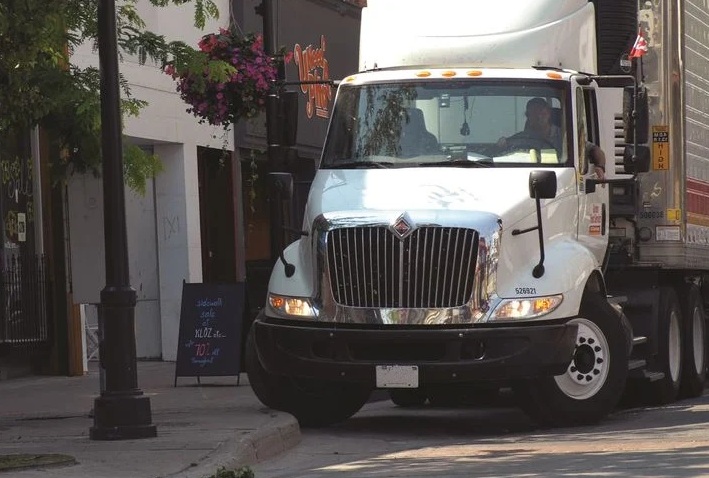Curb strikes are inevitable in the close confines of a city. Guard against excessive damage with treads and sidewalls designed for the application. Photo: Jim Park
Round and black is a definition often applied to tires of any stripe, but it does a disservice to the technology and engineering behind optimizing tires for specific applications. Tires designed and built for hard-scrabble regional service are quite different from those that will run 150,000 to 200,000 miles or more on silky-smooth interstate highways.
A regional tire is seen as one used by businesses such as public utilities, government, food distribution, manufacturing, petroleum, and schools operating within a 300-mile radius. These vehicles carry medium to heavy loads, frequently on two-lane roads, highways, and secondary routes. They generally return to home base at night and have an annual mileage of 30,000 to 80,000 miles.
“Tires in this category experience several challenges, including shoulder scrub, start/stop aggression, lateral scrub, and heel/toe wear,” says Paul Tatarchuk, B2B special services coordinator for Michelin North America.
According to Goodyear, the regional haul segment now makes up about 40% of the North American trucking market. That’s driven partly by e-commerce sales, which in the U.S. totaled $453.5 billion in 2017, a 16% jump from the previous year, according to the U.S. Department of Commerce.
The ongoing growth of e-commerce and increasing demand for last-mile delivery services “brings a corresponding increase in the number of distribution hubs,” says Mahesh Kavaturu, Goodyear marketing manager. “As a result, shipping routes are shrinking, and trucks are traveling shorter distances.”
That has put pressure on tire makers to build tires especially suited to that application. Fleets will probably see lower overall tire costs if they make that distinction in their tire spec.
by Jim Park
Source: https://www.truckinginfo.com
CUT COTS OF THE FLEET WITH OUR AUDIT PROGRAM
The audit is a key tool to know the overall status and provide the analysis, the assessment, the advice, the suggestions and the actions to take in order to cut costs and increase the efficiency and efficacy of the fleet. We propose the following fleet management audit.




